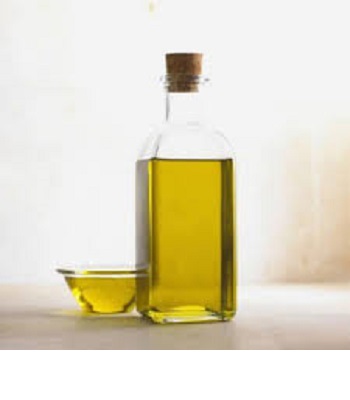Acetic Acid
0,00 €Acetic acid, also known as ethanoic acid and methanecarboxylic acid (CH3COOH), is a colorless liquid that has a strong and distinct pungent and sour smell. It is the product of the reaction between methanol and carbon monoxide at 185 ᵒC and 27.5 bar in a fluidized bed reactor with rhodium containing complex catalyst and methyl iodide as promoter.
Acetic acid is a global product. China, the United States, the rest of Asia, and Western Europe include the major market for this product. These regions account for more than 90 percent of the world capacity (virgin acid). Vinyl acetate monomer (VAM) is the largest end use for this product in the four regions and constitutes 30 percent of global consumption. VAM is used in polymer manufacture for adhesives and coating.
Acetic Acid Fanavaran
0,00 €This plant produces 150 kt/y of Acetic Acid, consuming 87000 t/y of methanol and 81150 t/y of carbon monoxide, produced by FN.P.C. methanol and carbon monoxide plants. Acetic Acid is the product of the reaction between methanol and carbon monoxide at 185 °C and 27.5 bar pressure in a fluidized bed reactor with Rhodium containing complex catalyst and methyl iodide as promoter. The process technology of which and BEP acquired from KMT Company in Ukraine and the detail design and procurement carried out jointly by OIEC from Iran and LG from Korea.
Acid-OLEIC Acid
0,00 €Oleic acid is a fatty acid that occurs naturally in various animal and vegetable fats and oils. It is an odorless, colorless oil, although commercial samples may be yellowish. In chemical terms, oleic acid is classified as a monounsaturated omega-9 fatty acid, abbreviated with a lipid number of 18:1 cis-9.
Acid-STEARIC Acid
0,00 €Stearic acid is a saturated fatty acid with an 18-carbon chain. The IUPAC name is octadecanoic acid. It is a waxy solid and its chemical formula is C₁₇H₃₅CO₂H. Its name comes from the Greek word στέαρ “stéar”, which means tallow. The salts and esters of stearic acid are called stearates.
Hydrochloric Acid
0,00 €| Model : | HCl |
| Description : | Purity: 31 – 33 % ; Unit: Kg |
| Company name : | Chloran Chemical Production Company |
| Packaging : | 220 Litre Drums, IBC, Bulk |
| Minimum order : | 1 |
| Standard : | ISIRI 209 |
| Production power : | |
| Payment type : | Cash |
Hydrochloric Acid
0,00 €DESCRIPTION
Hydrochloric acid, also known as muriatic acid, is an aqueous solution of hydrogen chloride. It is a colorless solution with a distinctive pungent smell. It is classified as a strong acid. It is a component of the gastric acid in the digestive systems of most animal species, including humans. Hydrochloric acid is an important laboratory reagent and industrial chemical.
HYDROCHLORIC ACID
0,00 €Hydrochloric acid is a colorless inorganic chemical system with the formula H2O:HCl. Hydrochloric acid has a distinctive pungent smell. It is mainly produced as a precursor to vinyl chloride for PVC. It is classified as strongly acidic and can attack the skin over a wide composition range, since the hydrogen chloride practically dissociates completely in solution.
Sodium Hypochlorite
0,00 €| Model : | NaClO |
| Description : | Purity: 15 – 19 % ; Unit: Kg |
| Company name : | Chloran Chemical Production Company |
| Packaging : | 220 Litre Drums, IBC, Bulk |
| Minimum order : | 1 |
| Standard : | ISIRI 2361 & ISIRI 8349 |
| Production power : | – |
| Payment type : | Cash |
Sodium sulphide flakes 60%
0,00 €Sodium sulphide flakes (Na₂S) is manufactured and sold as a yellow, solid flake with a sulfurous (rotten egg) smell.
HS Code: 28301000
Chemical formula: Na2S
Sulfonic Acid
0,00 €LABSA 96-97% ( Sulfonic Acid ) is the largest-volume synthetic surfactant because of its relatively low cost, good performance, the fact that it can be dried to a stable powder and the biodegradable environmental friendliness as it has straight chain. LABSA 96% is an anionic surfactant with molecules characterized by a hydrophobic and a hydrophilic group.
HS code: 34021130
Chemical formula: R-C6H4-SO3H / C6H5CnH2n+1
Classification: anionic surfactant
Tri Ethylene Glycol
0,00 €| Model : | – |
| Description : | Application : Polyurethane Textile Softener, Petroleum solvent, Dehydration of Natural Gas, Plasticizer, Solvent for Nitrocellulose. |
| Company name : | Shazand Petrochemical Co |
| Packaging : | – |
| Minimum order : | 1 |
| Standard : | – |
| Production power : | 105000 |













